Published: 23 Dec, 2019 Tour My India
While the Bengali obsession with football, fish, sweets and Durga Puja, is well known, there are others that are lesser known. For example, they are just as obsessed with their wedding ceremonies, as can be witnessed in during a traditional Bengali wedding.
Treat to the eyes
It is needless to say that Bengali weddings are a treat to the eyes. From the decorations with the colourful flower garlands to the food menu, they are surely one of the most extravagant celebrations, and believe us or not, being a part of it is an experience of a lifetime.
Want to witness a fairy tale? Be a part of a Bengali Wedding
A traditional Bengali wedding is certainly more than just a union of two souls. It is a fairy-tale which goes beyond love and the promises of a lifetime. It is much more than what you can imagine of any wedding ceremony, and is especially characterized by extremely excited, enthusiastic friends and family members, happy faces flaunting their teeth all around and beautiful smiles spreading good vibes.
A Bengali wedding invitation is paramount
A year without a Bengali wedding invitation for any Bengali is considered to be in vain. Yes! You read it right. People are often heard boasting about the number of wedding invitations they received during a wedding season.
Bengali wedding is a grand festival
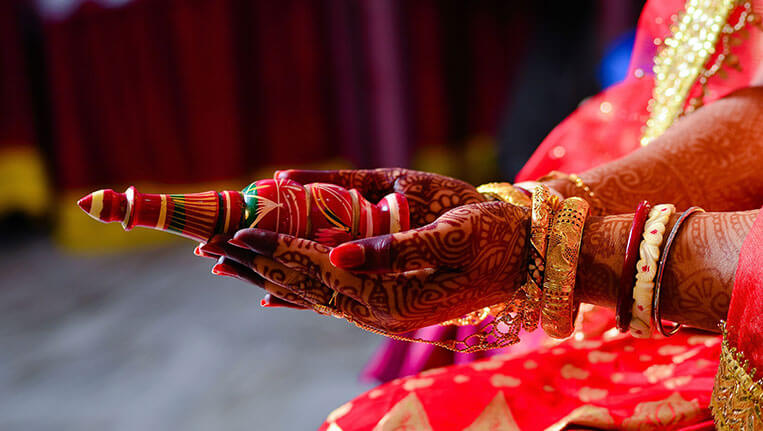
A Bengali hindu wedding is not a one or two day affair, but can go on for more than a week as well. More often than not, friends and family members are seen frequently visiting the house of the bride or the groom for the entire week before the wedding day.
The visits are not only for the purpose of getting together, having good chats and laughter, enjoying lip smacking food, but are actually aimed at performing several rituals.
The rituals that are performed in a Bengali wedding may or may not involve the bride or the groom. Many rituals require the involvement of friends and family members as well. These rituals can be performed before, during and even after the wedding day, that require the involvement of many.
Do you know all the rituals in a Bengali Wedding?
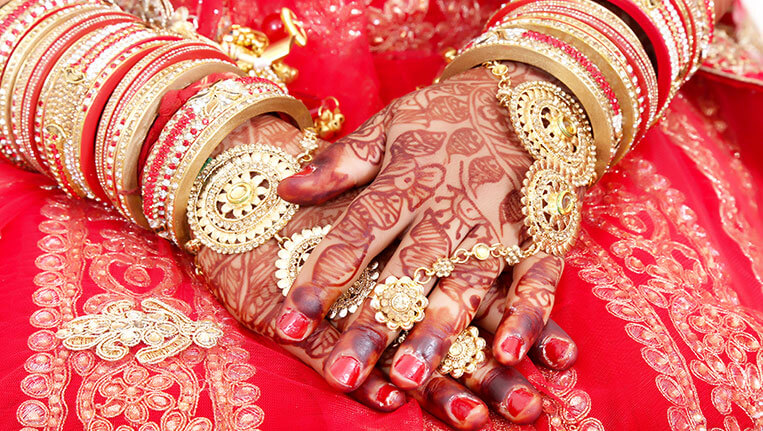
The answer is already known to you. Don’t try to slog your head to remember the rituals that you have witnessed in the last wedding that you visited. It is not very surprising that you were just busy going around with your cousins, tasting the delicious fish fry or paneer Pakoda. It’s absolutely okay!
Nowadays things are also changing rapidly. Generation after generation, many traditional rituals which were previously celebrated with utmost indulgence are becoming obscure. This generation is facing the wrath more than any other previous generations, and most of us have little to almost no knowledge about the sacred rituals of a beautiful Bengali wedding that are supposed to be performed in a Bengali wedding venue.
Don’t blame yourself. It is quite justified as your time constraints or no will to spend huge amounts of money on weddings, and many more lifestyle factors are playing a crucial role in these changes.
Know the Different rituals
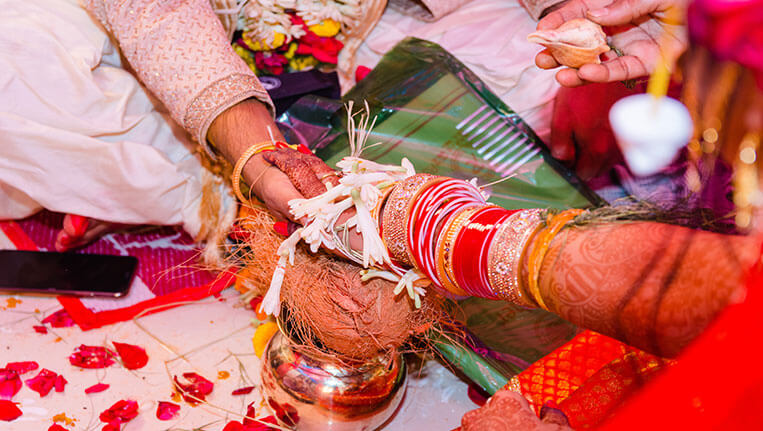
If you randomly ask a Bengali whether he or she is fond of Bengali weddings, it is very likely that you will get an answer, ‘YES’. In spite of that answer, it is very unlikely that they will have the knowledge about the several rituals that are performed in a Bengali wedding. People enjoy the gathering, decorations, food and the exorbitant vibe during the wedding, but hardly notice the rituals that are followed. Although the basic rituals like ‘Gaye Holud’, ‘Bodhu Boron’, ‘Mala Badal’ and‘Saat Paak’ are quite popular, there are many other important ones that people are not aware of.
Don’t be worried. All the traditional rituals that have been used for decades in Bengali weddings have been listed and explained below. Next time you go to a Bengali wedding be au courant of what’s happening around. Know all the rituals and their significance. Be a pro about the rituals and surprise all your friends and family members next time. Here is a comprehensive list and description about the several arrangements and traditional rituals, along with some interesting facts of a Bengali wedding, that you may not be aware of:
How is the wedding arranged?
Traditionally couples were matched mainly by the family members, relatives or friends. These match-makers are known by the name ‘Ghotok’, and have been making the right matches for years. It used to be the Ghotok’s responsibility to introduce the family members and the couple to each other.
However, they have become quite rare in recent times. Love marriages have taken over and the wedding apps have made the process of finding a bride or a groom easier.
Arranged by a Ghotok or your mobile app, both the bride and groom must agree, and once both the families come to the agreement, the merry time of all the rituals start. A series of rituals are followed which can be divided into three sections:
- Pre-Wedding Rituals
- Wedding Rituals
- Post Wedding Rituals
Pre Wedding Rituals
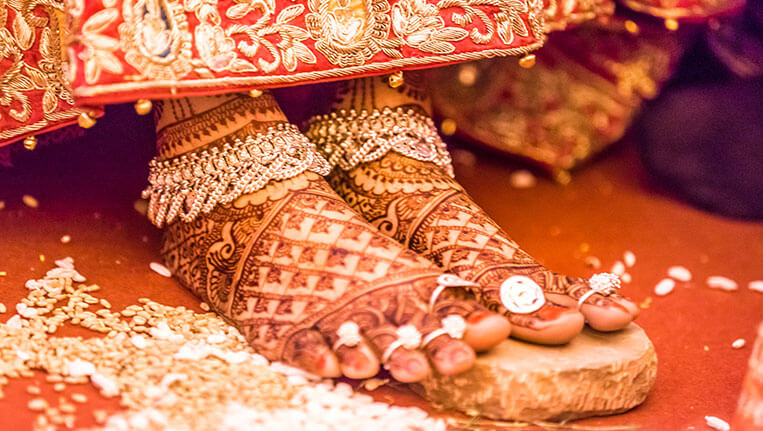
- Adan Pradan: Adan Pradan, which means give and take in English, is the first ritual that kick-starts the entire marriage ceremony. Here, give and take is not about giving gifts or money to each other’s family. It’s the basic need for any marriage – CONSENT.
Previously, both the families used to meet at a particular time and location decided by a priest, where they formally gave consent for the marriage and fix a date for the grand union. However, things have changed now due to busy work-life of people, and the entire date fixation ritual is done over phone calls.
- Ashirvad: The popular ceremony of engagement is known as Ashirvad in Bengali weddings. The ceremony is organized two to three days before the actual day of marriage. However, the time can also vary according to the wish of the two families.
The groom, along with his close friends and family members, visit the bride’s house with lots of gifts and shower blessings on her. The gifts can include a plethora of attractive things including sarees, jewelry, other clothes, sweets and expensive nuts. On the day of Ashirvad the alliance is fixed. Both the parties formally accept the bride and the groom as new members of their families.
- Aai Budo Bhaat: This is a ritual of enjoying the last meal as a bachelor or bachelorette. One of the most awaited rituals of Bengali marriages for both the bride and the groom, Aai Budo Bhaat is immensely enjoyed with meals prepared by close relatives, parents, or friends.
The best part about Aai Budo Bhaat is the number of dishes that are served to the bride or the groom. The food that is served on Aai Budo Bhaat is quite sumptuous, and can include a number of veg and non-veg delicacies of Bengal as per the choice of the bride.
The ritual can be arranged more than once by different people who wish to arrange it.
- Vridhi: This is an age-old ritual performed during Bengali weddings. The senior people from both the bride’s and the groom’s families perform a puja where they worship the ancestors of both the families, and seek their blessings for the new couple.
- Dodhi Mangal: This is the first ritual that is performed in the bride’s house on the day of the marriage. The bride is given to wear a white saree with red borders (very popular amongst Bengalis) early in the morning, and is served a meal known as ‘dodhi’ and ‘khoi’, which are Bengali names for yoghurt and puffed rice respectively.
- Ganga Nimontron: The ritual of inviting the Goddess of the holy River Ganga follows the Dodhi Mangal ritual. In this ritual, the mother of the bride goes to the river Ganga with a brass pot also known as ‘Kalsi’, and invites the goddess. Friends and family members also accompany the bride’s mother, and the ritual is called ‘Ganga Nimontron’. She fills the pot with the water from the Ganga and brings it back home.
- Gaye Holud: Who doesn’t want to look fresh and glowing on the day of his or her marriage? It’s imperative to answer this question with a YES. People outside the Bengali community often visit a spa or a beauty parlour on the day of their marriage to get a facial or a spa done. But Bengalis know how to celebrate that too.
Bengalis without any doubt know how to use the wonder spice – ‘Turmeric’, known as Holud in Bengali. The Gaye Holud ritual validates the same. The groom first touches the turmeric paste that is sent to the bride’s place. This paste is then sent to the bride’s house to be applied on her. It’s more than just a ritual where everyone shares laughter and love by applying turmeric paste on each other.
After the application of the turmeric, the bride is bathed with water from the nearest river or pond.
- Sankha Pola Porano: This is a ritual in which the purohit chants mantras and performs a puja when the bride’s hands are adorned with ‘Sankha’ and ‘Pola’ by seven married women. The ‘Sankha’ symbolises the moon, the quality of which has to be adopted by the bride. The ‘Pola’, on the other hand, symbolizes good health and fertility.
- Adhibas Tatva: Adhibas Tatva are the gifts that are gifted to the groom’s family from the bride’s side. The gifts are presented in the copper container and are decorated with colourful papers. The Tatva contain sarees, dhan, durbo, sweets, nuts and so on.
- Kubi Patta: This ritual is performed in the house of both the bride and the groom. This ritual involves worshiping the god of gold ‘Kuber’. Three metal pots are kept filled with khoi, dhan and crushed rice. The ritual is performed on the day of marriage.
Other small rituals that are followed as pre-wedding ceremony include ‘Mondop Sajano’ and ‘Kone Saaj.’
Important Wedding Evening Rituals
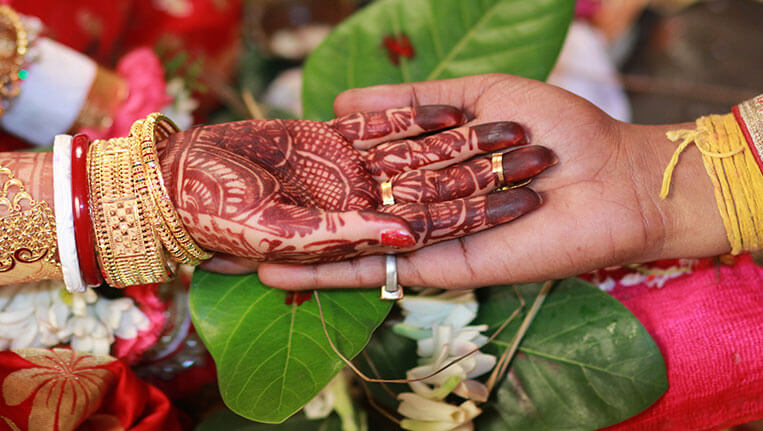
After all the pre-wedding rituals, the main excitement paves in. The wedding evening starts and the wedding rituals are followed one by one.
- The Bor Jatri: The groom is accompanied by his friends and family to the bride’s home where the marriage takes place. This journey is enjoyed with a lot of music and joyful dance by all.
- Bor Boron: This ritual is performed to welcome the groom. It is mainly performed by the elders of the family. The groom is welcomed by a Boron Dala that is mainly held by a female. The Boron Dala contains Kumkum, incense stick, lamp sticks, sweets and rice.
- Potto Bostro: After the groom is welcomed, he is taken to the ‘mandapa’. There he is given clothes to change, which he will be wearing throughout the series of rituals that follow for the marriage.
- Saanth Paak: This is one the most exciting rituals in a Bengali marriage. Here the bride is told to be seated on a ‘Piri’ which is then lifted by her brothers, while she sits on it. The brothers hold the ‘Piri’ and take 7 rounds around the groom.
- Subho Drishti: The Saanth paak is followed by the Subho Drishti. This is a ritual where the bride removes the betel leaves from the front of her face, which she had been holding during Saanth Paak. She then looks at the groom and the eye contact is established.
- Mala Badal: This is the ritual where the bride and the groom exchange garlands thrice with each other.
- Sampradan: It is one of the most sacred rituals in which finally the hands of the bride is given to the hands of the groom. This is done under the ‘chadnatala’ inside the marriage ‘mandapa’ by a male member of the family, preferably by the father of the bride.
- Yagna: The Yagna is done while chanting Vedic Mantras by the priest. The Yagna is aimed at pleasing the gods and goddesses to get their blessings for the newly wed.
- Saptapadi: After the Yagna, the bride and the groom covers six rounds around the fire of the Yagna. The ritual of Saptapadi is believed to establish the union of the two souls for eternity.
- Anjali: This is the ritual in which the couple offer puffed rice to the fire of the yagna.
- Sindoor Daan: Sindoor daan is the final wedding ritual of the marriage ceremony. In this ritual the groom puts Sindoor on the forehead of the bride without looking at her, while the bride puts a saree over her head called ‘ghoomta’.
Post Wedding Rituals
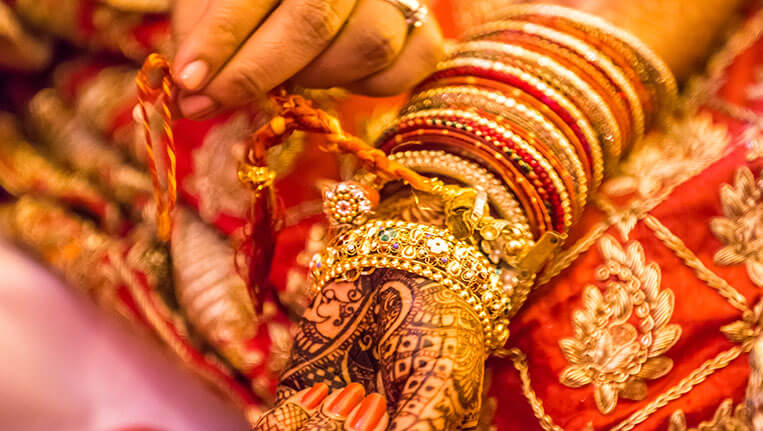
Now that the bride and the groom are married, the real fun of the post wedding rituals starts. The several post-wedding rituals that have been traditionally followed by Bengalis for decades are as follows:
- Bashor Ghar: After the marriage is complete, the bride and groom are seated together surrounding friends and family. People here sing, talk, dance, and enjoy their hearts out.
- Bashi Biye: This is the next day after the marriage. Here the bride and the groom are still at the bride’s place. On this day, the groom again puts sindoor on the forehead of the bride.
- Bidai: On the day of Bashi Biye, all the elders gather together in the bride’s home and shower their blessings on the couple, after which the bride leaves her father’s house and starts for her new abode, along with the groom.
Previously the bride used to leave on a ‘palki’ which has now been replaced by cars.
- Bou Boron: Bou Boron is the welcoming of the bride in the groom’s house. In this ritual, the bride puts her feet into a plate filled with dye and milk. Then she walks with the stained feet on a white sheet of cloth and enters her new abode.
- Kaal Ratri: This is the night after the marriage day. This is the most difficult night for the newlywed couple, as they have to spend the night in separate rooms and are not allowed to spend the night together.
- Bou Bhat: This ritual has taken a huge shape in the recent times. Previously, the bride used to prepare special dishes for all the members of her new family. However, nowadays, a big ceremony is arranged by the groom’s family to introduce the new bride to the entire family.
- Dira Gaman: This is the ritual in which the bride and the groom visit the bride’s house as a newlywed couple for the first time. The thread tied on the hands of the bride and groom during the wedding is cut by the ‘purohit’.
These are the traditional Bengali wedding rituals & customs, among which, many have been transformed with time. Many Bengali weddings nowadays don’t necessarily follow all the rituals. Moreover, even if they follow the rituals, they follow it in not so very traditional way. But let me tell you the best part, it doesn’t really make a difference. Bengali marriages are awesomely romantic and fun at the same time. You need to experience it yourself. You will surely fall in love with the culture and aura of the most dramatic, yet astounding celebrations of love.
This article is contributed by Country Roads Resort and edited by our team. Country Roads Resort is one of the finest hotels in Howrah, West Bengal, which offers the best destination wedding venue in West Bengal. Along with luxurious accommodations which are divided into suite, king and club rooms, it also offers the option of a destination wedding venue, an experience which is made special by its serene ambience.
Recommended Honeymoon Tours
Frequently Asked Questions:
Q. What are the important Bengali Hindu Wedding Rituals?
The important Bengali Hindu wedding rituals are performed in three stages: pre wedding, wedding and post wedding rituals. The pre wedding rituals are: Adan Pradan, Ashirvad, Aai Budo Bhaat, Vridhi, Dodhi Mangal, Ganga Nimotron, Gaye Hould, Sankha Pola Porano, Adhibas Tatva, Kubi Patta, Mondop Sajano & Kone Saaj. The wedding rituals are: The Bor Jatri, Bor Boron, Potto Bostro, Saanth Paak, Subho Drishti, Mala Badal, Sampradan, Yagna, Saptabadi, Anjali and Sindoor Dhan. The post wedding rituals are: Bashor Ghar, Bashi Bye, Bidai, Kaal Ratri, Bou Bhat and Dira Gaman.
Q. What are the popular dishes served in Bengali Wedding?
The popular dishes served in a Bengali wedding are: mochar chop, macher chop, begun bhaja, koraishutir kochuri with aloo dum, potoler dolma, dhokar dalna, mishti pulao, macher/fish paturi, kosha mangsho, chingri malaikari, kolkata style biryani, chicken chaap, rosogolla, sandesh and mishti doi.
Q. What are the most famous destinations wedding places in West Bengal?
Glenburn Tea Estate Darjeeling, The Rajbari Bawali Kolkata, Hotel New Elgin Darjeeling, Oberoi Grand Kolkata, Mayfair Darjeeling, The Lalit Great Eastern Kolkata, Country Roads Resort in Howrah.
Q. What traditional dress does the bride & grooms wear in a Bengali Wedding?
The bride is attired in a Benarasi saree, Shakha & Pola, bangles like ruli, moyur mukh bala, pashar bala and meenar bala, bracelets, alta, bindi and topor. The groom wears a silk dhoti along with a Punjabi (kurta), silk dhoti and topor.
Tour My India is among the top notch online travel organizations, which has been recognized by the Department of Tourism, Government of India. Owing to its rich experience in the travel domain, it has earned specialization in offering all types of tours. Right from an excursion on the rugged terrain of hilly areas, to pilgrimage on holy places, Tour My India has quality experience and expertise in making all the arrangements for a safe and memorable trip.


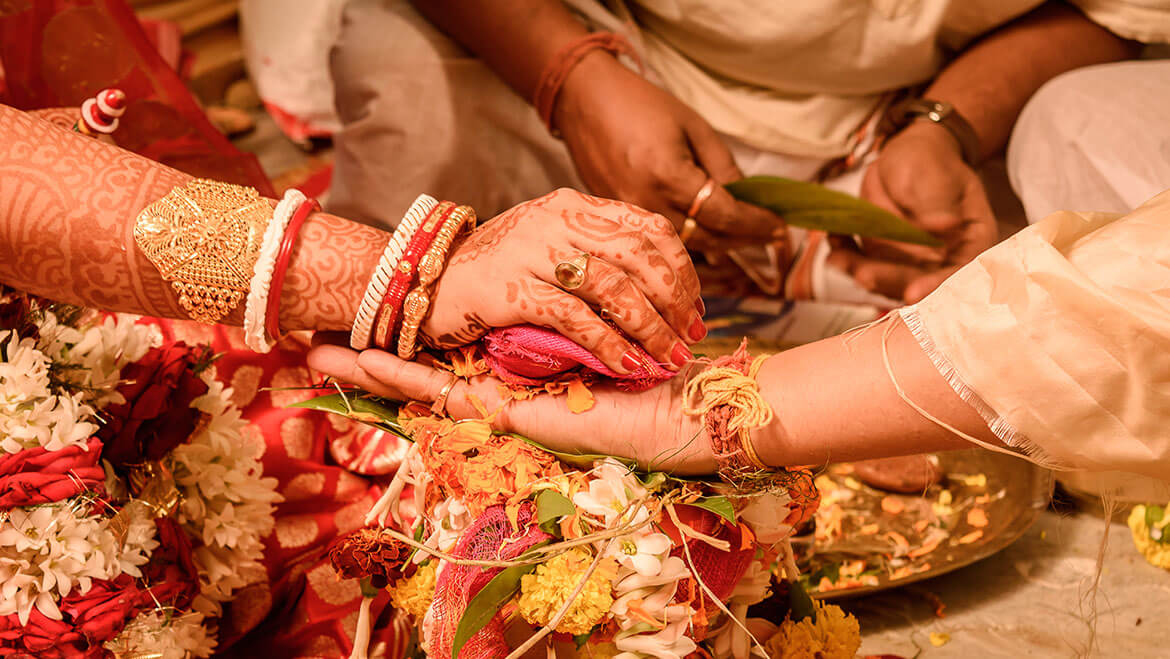






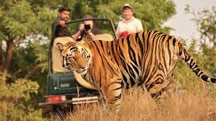
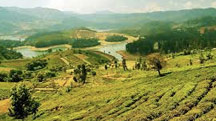
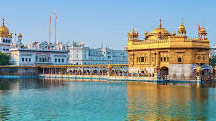





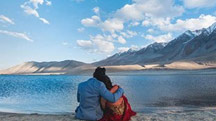 5 Nights / 6 Days
5 Nights / 6 Days 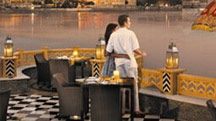 3 Nights / 4 Days
3 Nights / 4 Days 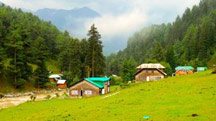 6 Nights / 7 Days
6 Nights / 7 Days  15 Nights / 16 Days
15 Nights / 16 Days 








